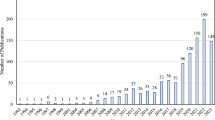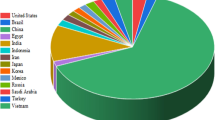Abstract
Silt-based foamed concrete, in which the cement is partially replaced with silt, has become a novel material in road construction projects. However, at present, only a small number of studies have been completed which have focused on different types of silt material and their influence. Therefore, to address these issues, this research investigation conducted experiments regarding silt-based foamed concretes to analyze their mechanical and physical properties. The compressive strength, flexural strength, elastic modulus, pore structure, dry shrinkage and water absorption were studied and analyzed in detail. Furthermore, the respective densities of foamed concrete, silt content and plastic index of silt were regarded as the influence factors. The results revealed that the compressive strength, flexural strength and elastic modulus of the samples increased with the increasing density, and decreased with the increasing silt content and plastic index. In most of the cases, the silt-based foamed concrete could satisfy the requirements as a subgrade filler, and the addition of silt was an effective measure by which to reduce the cost and pollution produced by cement. It was found that the increase of plastic index of silt will transform pore structures from uniformly dispersed closed pores into coalesced opening pores, in turn forming silt-based agglomerates. In addition, the increase in silt content and decrease in plastic index were observed to reduce the drying shrinkage. Furthermore, water absorption increased to average levels of 12% and 2.42%, respectively, as the silt content increased by 10% and the plastic index of silt increased from 7.2 to 15.4. The influence of silt on the properties of foamed concrete depended on the properties of silt and the effect of addition of the silt on pore structure of foamed concrete. The results of this study may provide an important reference to the application of silt-based foamed concrete in engineering projects.














Similar content being viewed by others
Abbreviations
- C c :
-
Curvature coefficient, Cc = d302/(d10 × d60)
- C u :
-
Non-uniform coefficient, Cu = d60/d10
- d 10 :
-
The particle size for finer 10%, (mm)
- d 30 :
-
The particle size for finer 30%, (mm)
- d 60 :
-
The particle size for finer 60%, (mm)
- I p :
-
Plastic index of the silt
- m c :
-
The mass of cement in the per cubic meter of foamed concrete, (kg/m3)
- m f :
-
The mass of foam in the per cubic meter of foamed concrete, (kg/m3)
- m s :
-
The mass of silt in the per cubic meter of foamed concrete, (kg/m3)
- m w :
-
The mass of water in the per cubic meter of foamed concrete, (kg/m3)
- Vf :
-
The bubble volume in the per cubic meter of foamed concrete, (L/m3)
- W/S:
-
The water-to-solid ratio, 0.55 in this test
- α :
-
Silt content
- ρ :
-
Target wet density
- ρ c :
-
The density of cement, 3100 kg/m3
- ρ f :
-
The density of foam, 55 kg/m3
- ρ s :
-
The density of silt, 1850 kg/m3
- ρ w :
-
The density of water, 1000 kg/m3
- ω L :
-
Liquid limit
- ω P :
-
Plastic limit
References
Song, X.; Zhang, H.; Wang, S., et al.: Hydrophilic characteristics and strength decay of silt roadbed in Yellow River alluvial plain. Chin. J. Geotech. Eng. 32(10), 1594–1602 (2010)
Zhu, F.; Zhang, W.X.; Dong, W.Z., et al.: A new calculation method for the bearing capacity of soft soil foundation. Adv. Mech. Eng. 9(10), 1–7 (2017). https://doi.org/10.1177/1687814017732520
Shi, X.; Huang, J.; Su, Q.: Experimental and numerical analyses of lightweight foamed concrete as filler for widening embankment. Constr. Build. Mater. 250, 118897 (2020). https://doi.org/10.1016/j.conbuildmat.2020.118897
El Kamash, W.; Han, J.: Displacements of column-supported embankments over soft clay after widening considering soil consolidation and column layout: numerical analysis. Soils Found. 54(6), 1054–1069 (2014). https://doi.org/10.1016/j.sandf.2014.11.002
Miao, L.; Wang, F.; Han, J., et al.: Benefits of geosynthetic reinforcement in widening of embankments subjected to foundation differential settlement. Geosynth. Int. 21(5), 321–332 (2014). https://doi.org/10.1680/gein.14.00019
Cao, W.Z.; Zheng, J.J.; Zhang, J., et al.: Field test of a geogrid-reinforced and floating pile-supported embankment. Geosynth. Int. 23(5), 348–361 (2016). https://doi.org/10.1680/jgein.16.00002
Liu, K.W.; Rowe, R.K.; Su, Q., et al.: Long-term reinforcement strains for column supported embankments with viscous reinforcement by FEM. Geotext. Geomembr. 45(4), 307–319 (2017). https://doi.org/10.1016/j.geotexmem.2017.04.003
Kim, T.-H.; Kim, T.-H.; Kang, G.-C.: Performance evaluation of road embankment constructed using lightweight soils on an unimproved soft soil layer. Eng. Geol. 160, 34–43 (2013). https://doi.org/10.1016/j.enggeo.2013.03.024
Tan, X.J.; Chen, W.Z.; Hao, Y.H., et al.: Experimental study of ultralight (<300 kg/m3) foamed concrete. Adv. Mater. Sci. Eng. 2014, 514759 (2014). https://doi.org/10.1155/2014/514759
Amran, Y.H.M.; Farzadnia, N.; Ali, A.A.A.: Properties and applications of foamed concrete; a review. Constr. Build. Mater. 101, 990–1005 (2015). https://doi.org/10.1016/j.conbuildmat.2015.10.112
Huang, J.; Su, Q.; Zhao, W., et al.: Experimental study on use of lightweight foam concrete as subgrade bed filler of ballastless track. Constr. Build. Mater. 149, 911–920 (2017). https://doi.org/10.1016/j.conbuildmat.2017.04.122
Tiwari, B.; Ajmera, B.; Maw, R., et al.: Mechanical properties of lightweight cellular concrete for geotechnical applications. J. Mater. Civ. Eng. 29(7), 06017007 (2017). https://doi.org/10.1061/(ASCE)MT.1943-5533.0001885
Lim, S.K.; Tan, C.S.; Li, B., et al.: Utilizing high volumes quarry wastes in the production of lightweight foamed concrete. Constr. Build. Mater. 151, 441–448 (2017). https://doi.org/10.1016/j.conbuildmat.2017.06.091
Ma, C.; Chen, B.: Properties of a foamed concrete with soil as filler. Constr. Build. Mater. 76, 61–69 (2015). https://doi.org/10.1016/j.conbuildmat.2014.11.066
Yang, Y.; Chen, B.: Potential use of soil in lightweight foamed concrete. KSCE J. Civ. Eng. 20(6), 2420–2427 (2016). https://doi.org/10.1007/s12205-016-0140-2
Balamuralikrishnan, R.; Saravanan, J.: Effect of addition of alccofine on the compressive strength of cement mortar cubes. Emerg. Sci. J. 5(2), 155–170 (2021). https://doi.org/10.28991/esj-2021-01265
Zhang, H.; Qi, X.; Wan, L., et al.: Properties of silt-based foamed concrete: a type of material for use in backfill behind an abutment. Constr. Build. Mater. 261, 119966 (2020). https://doi.org/10.1016/j.conbuildmat.2020.119966
Zhang, H.; Qi, X.; Ma, C., et al.: Effect analysis of soil type and silt content on silt-based foamed concrete with different density. Materials 13(17), 3866 (2020). https://doi.org/10.3390/ma13173866
Zhang, H.; Liu, M.; Shuo, Z., et al.: An experimental investigation of the triaxial shear behaviors of silt-based foamed concrete. Case Stud. Constr. Mater. 15, e00713 (2021). https://doi.org/10.1016/j.cscm.2021.e00713
Gao, H.Y.; Wang, W.G.; Liao, H.Q., et al.: Characterization of light foamed concrete containing fly ash and desulfurization gypsum for wall insulation prepared with vacuum foaming process. Constr. Build. Mater. 281, 122411 (2021). https://doi.org/10.1016/j.conbuildmat.2021.122411
Zhang, X.Z.; Yang, Q.; Li, Q.F., et al.: Effect of phenolic particles on mechanical and thermal conductivity of foamed sulphoaluminate cement-based materials. Materials 12(21), 3596 (2019). https://doi.org/10.3390/ma12213596
Helal, R.A.; Al-Baghdadi, H.M.; Al-Salim, N.H.A.: Using mortar infiltrated fiber concrete as repairing materials for flat slabs. Civ. Eng. J. 6(10), 1956–1973 (2020). https://doi.org/10.28991/cej-2020-03091595
Shubbar, H.A.; Nameer, A.A.: The fire exposure effect on hybrid reinforced reactive powder concrete columns. Civ. Eng. J. 6(2), 363–374 (2020). https://doi.org/10.28991/cej-2020-03091476
Chinese Standard: Standard for Geotechnical Testing Method. GB/T 50123-2019. Ministry of Water Resources of the PRC, Beijing, China (2019)
Chinese Standard: Test Methods of Autoclaved Aerated Concrete. GB/T 11969-2008. Standardization Administration of the PRC, Beijing, China (2008)
Chinese Standard: Technical Specification for Design and Construction of Cast-In-Situ Foamed Lightweight Soil Subgrade. TJG F10 01-2011. Tianjin Municipal Highway Administration, Tianjin, China (2011)
Chinese Standard: Specifications for design of highway subgrades. JTG D30-2015. Ministry of Transport of the PRC, Beijing, China (2015)
Wee, T.-H.; Babu, D.S.; Tamilselvan, T., et al.: Air-void system of foamed concrete and its effect on mechanical properties. ACI Mater. J. 103(1), 45 (2006)
Kearsley, E.; Visagie, M.: Properties of foamed concrete as influenced by air-void parameters. Concr. Beton 101, 9–13 (2002)
Nambiar, E.K.K.; Ramamurthy, K.: Air-void characterisation of foam concrete. Cem. Concr. Res. 37(2), 221–230 (2007). https://doi.org/10.1016/j.cemconres.2006.10.009
Nambiar, E.K.; Ramamurthy, K.: Influence of filler type on the properties of foam concrete. Cem. Concr. Compos. 28(5), 475–480 (2006). https://doi.org/10.1016/j.cemconcomp.2005.12.001
Ramamurthy, K.; Kunhanandan Nambiar, E.K.; Indu Siva Ranjani, G.: A classification of studies on properties of foam concrete. Cem. Concr. Compos. 31(6), 388–396 (2009). https://doi.org/10.1016/j.cemconcomp.2009.04.006
Acknowledgements
The authors would like to acknowledge Shandong Express Co., Ltd. of China for the financial support of this project. This paper was also supported party by the Qilu Young Scholar Program of Shandong University, part by the Technical Program of Shandong Department of Transportation under grant number 2020BZ01-03, part by the Key Research and Development Program of Shandong Province under grant number 2020CXGC010118 and 2019GSF109045.
Author information
Authors and Affiliations
Corresponding author
Rights and permissions
About this article
Cite this article
Zhang, H., Liu, M., Yu, J. et al. Mechanical and Physical Properties of Silt-Based Foamed Concrete with Different Silt Types. Arab J Sci Eng 47, 12803–12815 (2022). https://doi.org/10.1007/s13369-021-06551-1
Received:
Accepted:
Published:
Issue Date:
DOI: https://doi.org/10.1007/s13369-021-06551-1




